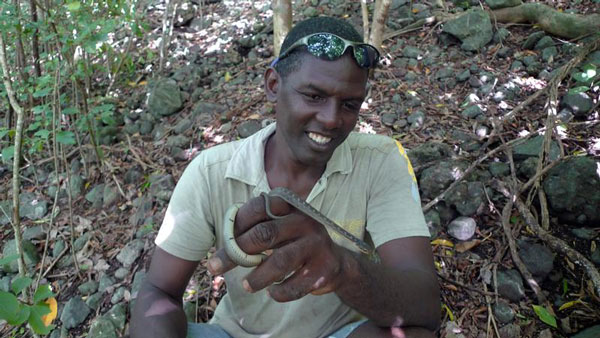11 St. Lucia Racers were captured and tagged during a hunt for the endangered species.
The St. Lucia Racer (Liophis ornatus), a non-venomous brown snake of the Colubridae family that was declared extinct in 1936 has reappeared off a tiny islet in the Caribbean, living in a nature reserve. The Durrell Wildlife Conservation Trust, a British-based organization, along with the U.S. Fish and Wildlife Service, the Balcombe Trust, and the Disney Worldwide Conservation Fund last year launched a herping expedition to the Maria Islands in search of the elusive snake.

Photo credit: The Durrell Wildlife Conservation Trust.
The St. Lucia racer has reappeared on a tiny Caribbean island. It was declared extinct in 1936.
It was on a tiny islet (30 acres in size) off the main island of St. Lucia that the snake was found, 11 in all that were tagged to track their movements and behavior patterns. Scientists spent five months searching the islet for the species, finding and tagging them during the day as the snakes hunted for frogs and lizards. The microchips implanted into the 11 snakes are expected to transmit data for 10 years. The scientists estimate that 18 St. Lucia racers live on the reserve. The scientists also collected DNA samples to determine the genetic diversity of the herps, with the hopes of setting up a breeding program.
The St. Lucia racer is a small brown snake that grows to about three feet in length. Native to the Caribbean islands, it has been decimated by the mongoose, a species introduced to the Caribbean islands in 1872 and found on St. Lucia's main island. The islet where the snake was found has no mongoose population. It has a fairly gentle disposition with humans, the scientists said. Other information such as their lifespan has not yet been determined.


